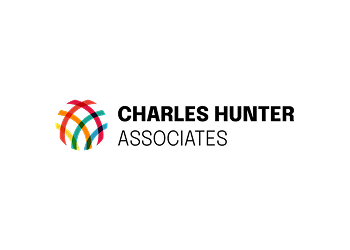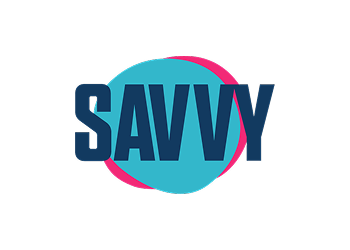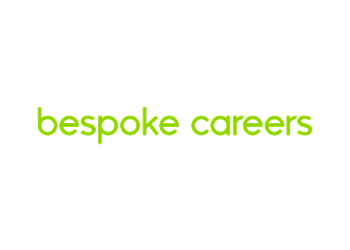11 Tips to Make Your Marketing Budget Go Further
Recruitment marketing is now a more effective way than ever for recruitment agencies to engage and attract candidates (or clients), and it is only going to become more significant as we go forward. It can be tough to stand out from the crowd whilst also sticking to your budget, but it doesn’t necessarily have to be. If you’re in charge of your agency’s brand, and you’re looking to get the most out of you marketing budget, look no further! Here are our 11 top tips to make your marketing budget go further.
1. Analyse Your Previous Marketing Initiatives
Analysing any previous marketing efforts is first on our list. Without this data you’re shooting in the dark. Website (Google), social and newsletter analytics are the best tools to acquire quantitative data. Outside of this, your ATS or recruitment database should track placement sources and peaks and troughs in candidate applications. Lastly, feedback from your hiring managers or recruitment team on the calibre of candidates being generated from each activity is highly valuable, even if it can be a little opinionated sometimes.
2. Guerilla Marketing at Events
Sponsoring events often takes up a large proportion of most marketing budgets. Instead, you can try spending some of this budget on

tickets to get your team along to an event so you can do a bit of guerilla brand marketing. 10 (well briefed) people from your team in company branded clothing will generate far more conversations than 2 people stuck at a booth all day.
Whilst we’re talking about events, training your subject matter experts to present at these events offers the unique opportunity to talk to a captive audience of prospective employees and/or candidates. Lastly, rather than fully sponsoring large annual events, try sponsoring the drinks or food, or offering your office as a venue for smaller meet-ups. It’s a great excuse to attend, plus your brand is given promotion for very little cost.
3. Review Existing Supplier Agreements
Outsourcing some, or even all of your marketing, is no bad thing. However, in the same way remaining with the same insurance company for many years can see you paying an unnecessary premium, remaining with the same marketing suppliers can mean you’re missing out on lower cost alternatives. Although time intensive, annually or bi-annually putting your services out to tender keeps your existing vendor on their toes and may in some instances provide significant cost saving by switching.
A great example is stock imagery. Some suppliers can charge hundreds if not thousands of dollars, for images, but there are now many new suppliers, such as Adobe Stock, that have a good range of licensed stock from as little as a dollar an image.
4. Recycle/Repurpose Content
Producing a large piece of content such as a video, blog or infographic can be expensive for many reasons, but there are numerous ways to extend the value of that investment. A video, for example, may attract and engage your audiences better on Facebook than on LinkedIn, but for very little additional cost you could use the research for the video to create a blog or infographic. These would expand your marketing reach to different platforms and also potentially engage new audiences who prefer to digest content through a different medium.
Whilst we’re on the subject of being thrifty, the majority of marketing content has a reasonably short period of impact. Thereafter it may help with SEO, but it will largely be left collecting dust. Simply dusting the cobwebs off of previously effective pieces of content and pushing them out again is not only free, but also has the added benefit of already being a proven success. There are plenty of other ways to re-purpose content, some of which can be found here.
Winning an award, or even being nominated, is free marketing for your business. Research what award ceremonies and categories are available for your sector in the early planning stages of your marketing strategy. This way you allow yourself plenty of time to submit entries and also can ensure your business is doing the work needed to be eligible for the awards themselves.
6. Produce Great Content
Producing great visual content doesn’t have to be expensive, there are now lots of online tools such as Canva or Piktochart that make it possible to design infographics and other images with very little skill or cost.
Written content is generally more time intensive than costly. To reduce the amount of time needed from one or two people, our favourite idea is to engage and train hiring managers or recruiters to write content. After all, they are the industry experts! In our experience, some people will require a bit of gentle prodding to begin with, but providing they are given good training and help with ideas, most can become competent bloggers, and some will even write better content than paid content writers.
7. Online Reviews
Encouraging your staff to review your company on sites such as Glassdoor is a low cost way to promote in-house employment brands.
To encourage reviews, perhaps incorporate requesting a Glassdoor review into your exit interviews. Don’t panic if your business ends up with negative reviews, simply the action of responding and addressing these points will be viewed favourably by most people. In addition, if the review is bad, it will highlight changes that need to actioned.
8. Online Contests
There is a common misconception that a lot of time and funding is needed to make an online contest successful but this doesn’t always need to be the case. Simple contests, such as polls and quizzes, boost engagement and reflect a more personable side to your business. As an example, if targeting those in the technology sector, a quiz asking people to upload images of their first computer could really gain some good engagement.
9. Create Audience Personas
Most of us have a high level understanding of our audiences. However, to cost effectively reach and engage people it is essential, to build detailed personas for each of your target audience groups.
Audience personas should include detailed demographic information along with media consumption preferences, interests, hobbies, and anything else that will help you better understand how to engage them. Here’s a detailed breakdown of some of the other elements you should include.
As a business we’ve been able to gain significantly more reach and engagement by building personas. For instance, with doctors, we targeted away from traditional medical journals to instead focus on mountain biking and golf websites, as we found that these were strong fields of interest for Doctors.
10. Webinars
Webinars, either led by a hiring manager running a job related Q&A or a recruiter talking through job seeker tips are another cost effective marketing technique. The added bonus with webinars is that they can be recorded and then re-used as marketing content for additional channels.
11. Database Marketing
Having candidate and applicant information on a recruitment database or ATS isn’t new, but these are rarely utilized effectively for marketing and on-going engagement. This can be costly if you need to upgrade to a new database in order to set up e-marketing, but a good alternative solution is to export your data to a specific mailing application such as MailChimp.
Crucially, newsletters shouldn’t just be used to promote live job opportunities. You can also use them to showcase on-going opportunities and engage candidate audiences that may not be actively seeking work and to source referrals.
Summary
Hopefully these 11 tips have provided you with inspiration to explore alternative ways of marketing your brands and attracting talent. If you’ve got any more tips we’d love to hear from you, and as always please feel free to get in touch if you’re looking for inspiration in making your marketing budget go further.
Recent Posts



Like what you see?
Sign-up to our newsletter and we will let you know when we publish new articles!
Sign-up to our newsletter and we will let you know when we publish new articles!
Latest Blogs

Latest Case Studies






